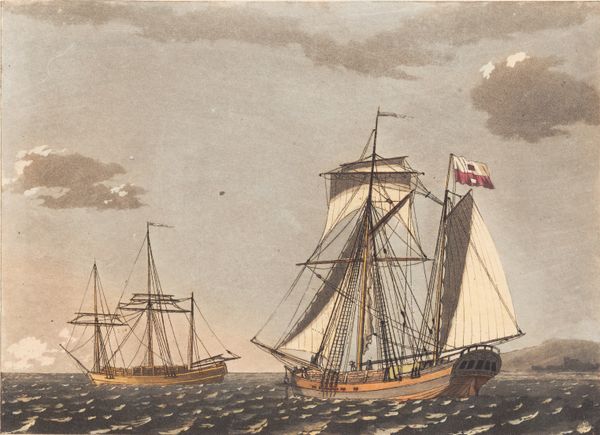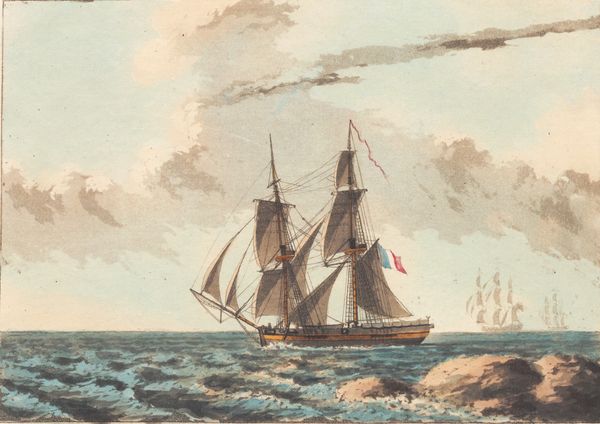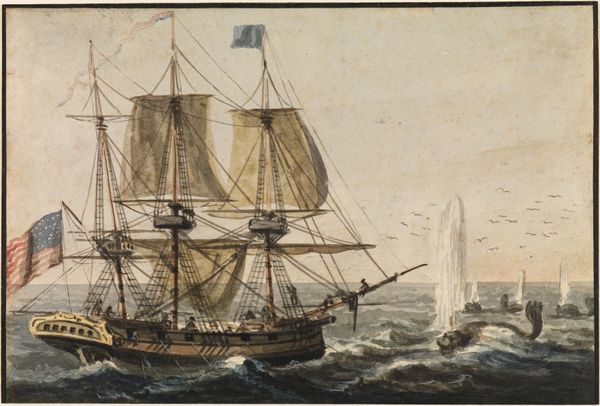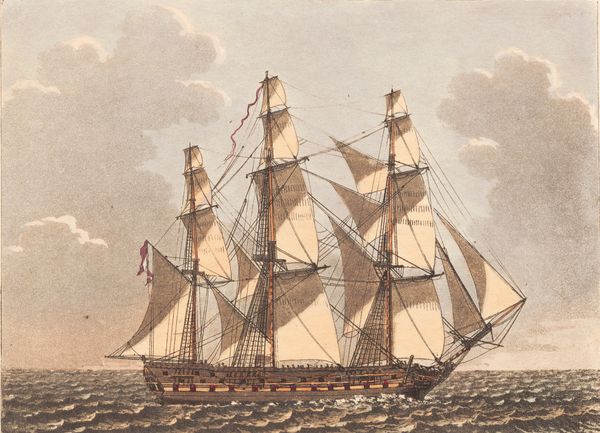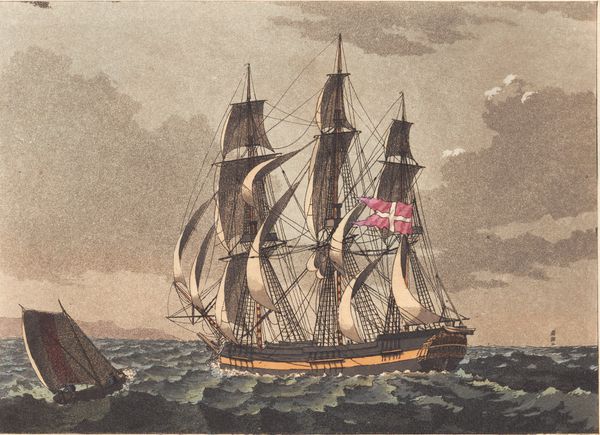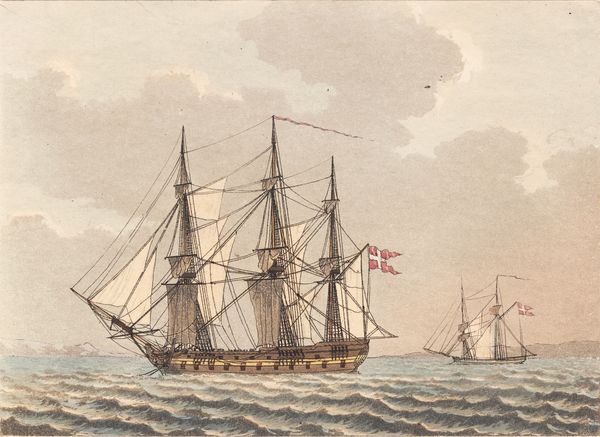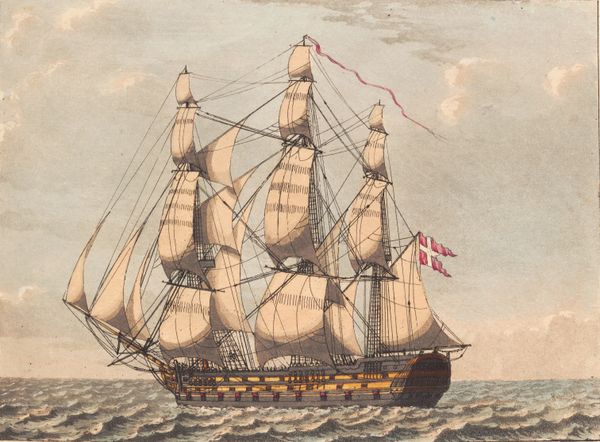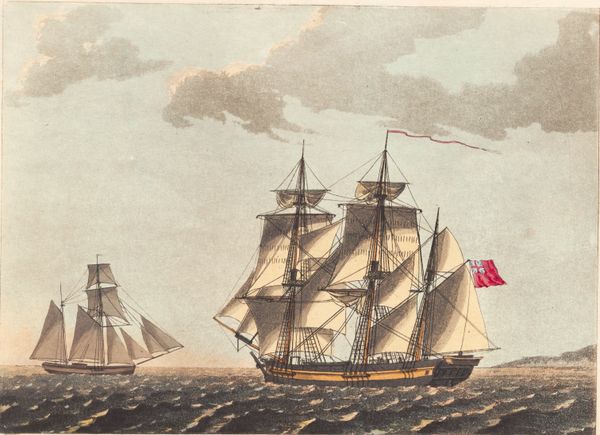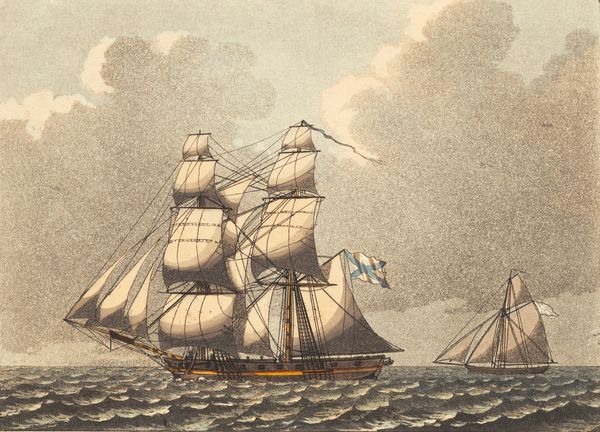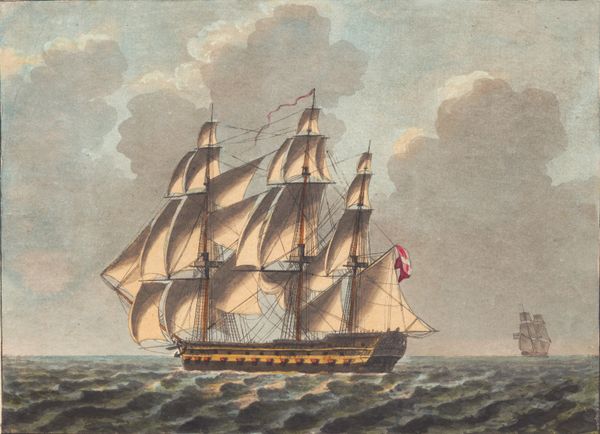
Et dansk orlog skib til ankers i en stille morgenstund 1805
0:00
0:00
aquatint, print, watercolor
#
aquatint
# print
#
landscape
#
watercolor
#
coloured pencil
#
romanticism
#
history-painting
#
watercolor
Dimensions: 161 mm (height) x 236 mm (width) (bladmaal), 188 mm (height) x 217 mm (width) (Plademål), 139 mm (height) x 192 mm (width) (billedmaal)
Curator: This aquatint, watercolor and print, brought to us by Niels Truslew in 1805, presents "Et dansk orlog skib til ankers i en stille morgenstund" which translates to "A Danish warship at anchor on a calm morning." It’s currently held in the collection of the SMK, the National Gallery of Denmark. Editor: It’s breathtaking! There's an arresting tranquility despite the implied military might. The way the light catches the water – it almost feels like a dream. Curator: The scene certainly captures a specific socio-political moment, depicting a warship at anchor. Denmark, at the time, maintained a significant naval presence, reflecting its role in Baltic trade and European power dynamics. Works like these reinforced national pride, becoming important instruments in shaping public perception of naval strength. Editor: And the visual politics are so interesting here. On the one hand, the presence of the warship broadcasts power; however, the serene setting seems to be almost neutralizing it. There's this subtle but insistent juxtaposition that seems key. It speaks to the complexities of Romanticism and its negotiations with themes of power, nature, and national identity. Curator: Indeed. The composition leans into those themes. Truslew, in employing aquatint and watercolor, allowed for detailed yet atmospheric depictions, characteristic of the period's romantic ideals and interests, to show national progress through artwork in public life. Editor: Yes, exactly! Looking closer, even the figures in the small boat hint at the hierarchies and relationships intrinsic to maritime power. Who are these people? Are they going to, or coming from the ship? The way the boat moves toward this warship has an embedded meaning; they’re going toward an agent of colonization and power that is a product of societal choices. This print provides visual evidence of choices as it perpetuates the visual status quo. Curator: Your analysis raises some crucial questions about whose perspective is prioritized. Truslew’s rendering definitely aligns with dominant societal views on maritime strength. In many ways it promotes a singular narrative in Danish history, which inevitably suppresses any critical, or even worse conflicting, voices. Editor: Exactly! Understanding art, especially historical pieces, requires acknowledging and addressing these erasures. The seductive beauty here, in a way, demands that critical interrogation. Curator: The study of works like Truslew’s reminds us how visual culture actively participated in constructing the narrative. Editor: Absolutely. And by engaging with these complex histories, we can unpack how the visual can endorse—and challenge—the status quo.
Comments
No comments
Be the first to comment and join the conversation on the ultimate creative platform.

